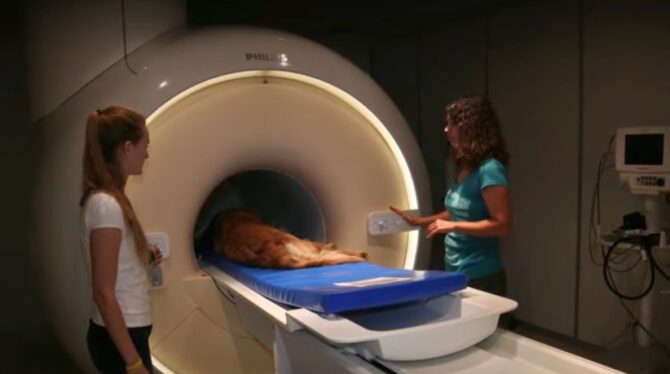A wagging tail, a cheerful bark, and a facial expression that looks suspiciously like a grin. Any dog owner will swear by it: their pooch doesn’t just show happiness; they smile. But is that “smile” an actual expression of joy or merely a physiological coincidence? In this article, we’ll explore what’s really happening when your canine companion “smiles” at you.
The Anatomy of a Dog’s Smile

Before we start talking about the psychological aspects, it’s crucial to examine the anatomical factors contributing to what we perceive as a dog’s smile.
What We See
Humans have long been captivated by their furry companions’ endearing facial expressions. When your four-legged friends appear to smile, their mouth is usually open, their tongue hanging out, and the corners of their mouth might be slightly turned up. However, is it fair to call this a smile in the human sense?
- Mouth: Your pet’s mouth opens primarily for thermoregulation, especially when they are hot or excited.
- Tongue: The floppy tongue isn’t just adorable; it helps with cooling as saliva evaporates.
- Facial Muscles: Unlike humans, canines have fewer muscles controlling their facial expressions, making subtleties harder to interpret.
What Science Says
The scientific community is somewhat divided on this issue. While some experts argue that dogs are capable of a range of emotions, including happiness, others say that the ‘smile’ is more a result of anatomy and body language than an emotional expression. It’s crucial to note that while dogs do have facial muscles, they are not as nuanced as humans.
Theories and Perspectives
Some theories suggest that a dog’s smile is an evolutionary adaptation to communicate with humans. Others propose that the ‘smile’ is a learned behavior; dogs realize that when they “smile,” they receive positive reinforcement from their human companions.
Emotions and Canine Psychology
If anatomy alone doesn’t answer the question, we must dive into the psychological realm. Do dogs even have the capability to feel happiness or joy? What does the latest research say about their emotional complexity?
Do Dogs Feel Happiness?
The short answer is yes. Numerous studies indicate that canines experience basic emotions like joy, fear, anger, and love. These emotions often manifest through a series of bodily reactions and behavioral cues such as wagging tails, excited barks, or even the appearance of what we interpret as a “smile.”
Emotional Complexity

However, it’s essential to differentiate between basic and complex emotions. While dogs may feel joy, attributing human-like feelings like pride, guilt, or shame to canines could be an overreach. The emotional spectrum in dogs is not as broad or complex as it is in humans, according to most canine psychologists.
The Nature vs. Nurture Debate
The classic nature versus nurture debate also applies to dogs. Some argue that their ability to “smile” and show emotion is innate, a part of their natural disposition. Others say it’s a learned behavior developed by interacting with humans who reward certain expressions and actions. The consensus leans towards a combination of both.
Human Interpretation: The Humanization Factor

Human interpretation plays a massive role in the dog-smile phenomenon. We cannot discuss if dogs can smile without addressing our propensity for anthropomorphism—the act of attributing human traits to animals.
Anthropomorphism: A Double-edged Sword
On one hand, anthropomorphism helps us connect deeply with our pets. We find common ground by attributing human-like characteristics to them. However, this tendency can also mislead us into making assumptions about what our pets feel or think based solely on our human perspective.
Communication Barriers
While humans primarily use verbal communication, dogs rely on a complex system of body language, vocalizations, and even scent to convey information. Our lack of fluency in “dog language” can lead to misunderstandings or oversimplifications, like mistaking a pant for a smile.
Beyond Facial Expressions
Facial expressions are just the tip of the iceberg when it comes to understanding a dog’s emotional state. Attuned canine owners might notice:
- Tail wagging or position
- Ear movement and position
- Body posture
- Vocalizations like barks or whines
By considering these multiple cues, we get a fuller picture of a canine’s emotional landscape.
Scientific Studies and Expert Opinions

Empirical evidence has a lot to contribute to this discussion. Let’s talk about what scientific studies and veterinary experts say about dogs and their ability to “smile.”
Case Studies and Research
Studies, such as those employing MRI technology to map canine brains, have shown that the canine neural network responds to positive stimuli much like the human brain does. While this doesn’t prove that dogs smile, it does support the idea that dogs experience emotions like happiness and excitement.
Veterinary Insights
Veterinarians often consider both physiological and behavioral signs to assess your four-legged friend’s well-being. While a “smiling” canine is generally considered a happy one, vets caution owners to look at the bigger behavioral context, including body language and vocalizations, to understand a dog’s emotional state fully.
Ongoing Research
Several institutes and universities are actively researching canine psychology, cognition, and emotion. As technology advances, our understanding of what dogs feel—and how they show it—will only deepen.
Smiling Canines: Fact or Fiction?

So, after all this discussion and debate, where do we stand on the question, “Can dogs actually smile?” Let’s summarize our findings.
Interpretation and Reality
While the jury is still out on whether dogs “smile” in the human sense, it’s clear that what we interpret as a smile is often a sign of contentment, relaxation, or excitement. Our emotional connection with our pets may lead us to humanize them, but this isn’t necessarily a bad thing as long as we also understand the nuances of canine communication.
When is it More Than a Smile?
In some cases, what looks like a smile can be a sign of stress or discomfort. This underscores the importance of understanding your dog’s overall behavior and not just focusing on their facial expression. Consult your vet if you notice sudden changes in your pet’s demeanor.
Summary and Takeaways
- Dogs do show signs of basic emotions like happiness.
- A “smile” in dogs is a combination of anatomy, evolution, and possibly learned behavior.
- Interpretation varies between humans, so it’s essential to understand a dog’s overall body language and context.
FAQs
Why Do Dogs Smile?
They may “smile” for various reasons, such as when they are calm and relaxed, when they hear the shake of their food bag, or when they are enjoying a car ride. The reasons can be subjective and differ from one pooch to another.
Is a Dog’s Smile a Sign of Happiness?
While it’s not confirmed that canine’s smile is a sign of happiness, being calm and relaxed could indicate that your pet is content, which may lead to a “smile.”
Do All Breeds Smile the Same Way?
Some breeds are genetically predisposed to “smile” more than others, according to veterinary behavior specialists.
How Can I Tell If My Dog Is Smiling?
Look for the corners of your pet’s mouth lifting slightly. A relaxed pooch will likely have its mouth open and may be panting, with no facial or mouth tension. The ASPCA notes that the corners of a relaxed canine’s mouth may turn upward slightly.
Is Showing Teeth a Sign of Aggression?
While showing teeth is commonly a sign of aggression in dogs, it’s crucial to consider the whole body language and context. Teeth showing can also be part of a submissive grin.
What Is a Submissive Grin?
A submissive grin is a gesture where a canine shows its front teeth but also displays a lowered head, wagging tail, flattened ears, a soft body posture, and soft, squinty eyes.
Can Dogs Smile to Show Submission
Yes, some canines appear to smile as a sign of submission to their human counterparts. This is related to them being in a relaxed muscular state.
Do Dogs Smile Because They Find Something Humorous?
No, they don’t smile because they find something funny. Their “smile” is more likely an expression of being calm and relaxed.
How Can I Make My Dog Smile More Often?
Pay attention to what makes your pet feel the happiest. Whether it’s a particular treat, a belly rub, or a car ride, identifying these triggers can help you see that grin more often.
Final Words
So, can dogs actually smile? Maybe. What’s certain is that the joy and companionship our four-legged friends bring into our lives are reasons enough to make us humans smile, whether or not our furry friends are grinning back at us.






